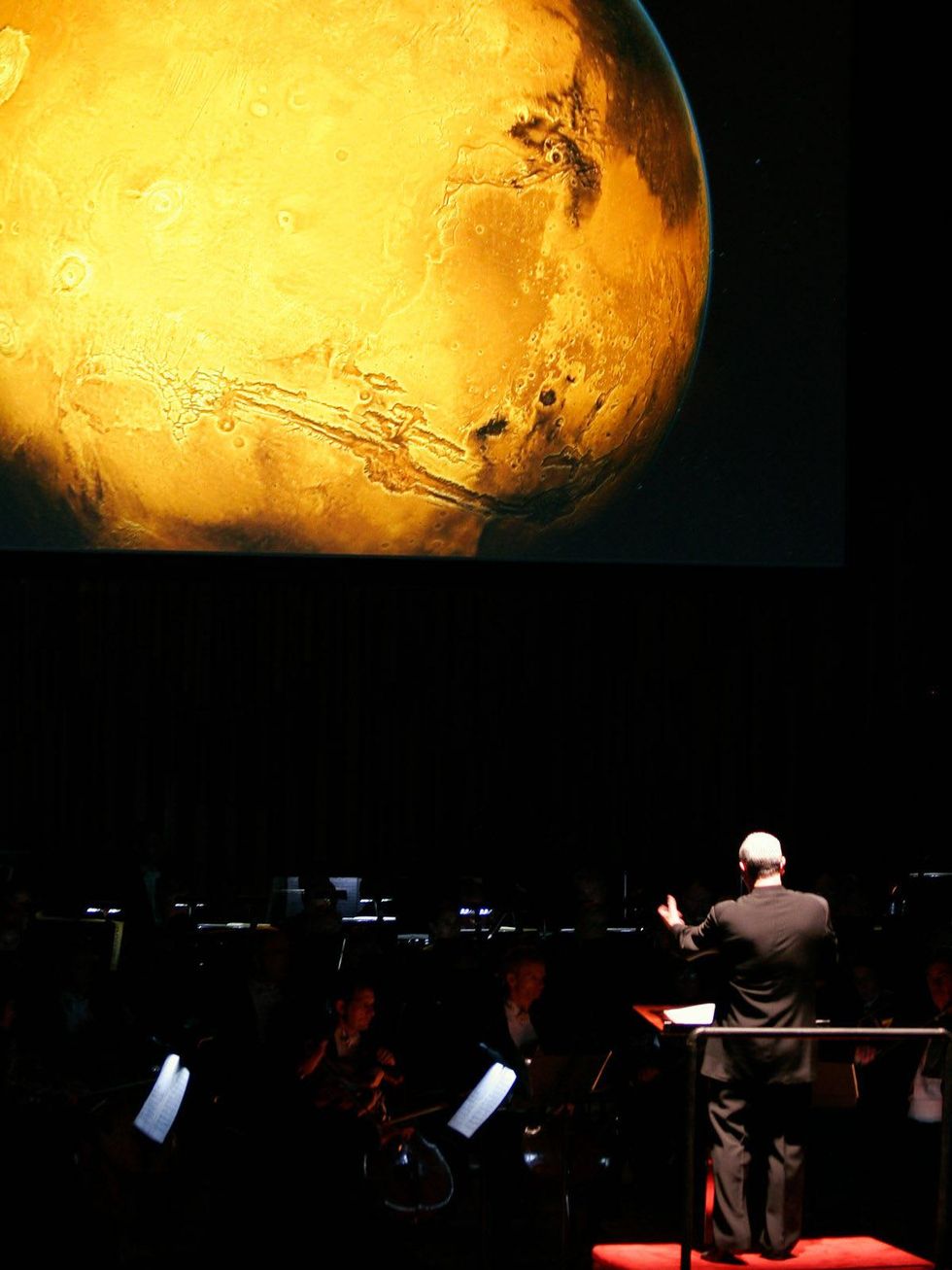Moving Musical Pictures
Science and art meet and mingle at the Houston Symphony with Orbit - An HD Odyssey
In September of 1977, NASA’s twin Voyager spacecraft launched into space carrying a Golden Record — made of gold-plated copper and encased in aluminum — conveying evidence of life on Earth.
Among images, greetings in many languages and sounds, the record assembled a sampling of classical music compositions which included Bach’s Branderburg Concerto No. 2 in F, Mozart’s Queen of the Night Aria from The Magic Flute, Stravinsky’s Danse Sacrale from Rite of Spring and Beethoven’s opening movement of the triumphant Fifth Symphony in C Minor.
"To the makers of music — all worlds, all times" was inscribed by hand on the record’s surface.
The contents were chosen over six months via a committee headed by Carl Sagan and are likely to survive billions of years, when the surface of the Earth will be drastically different, perhaps even charred and unable to sustain life.
It's another example of the commingling of science and art to carry the essence of the human spirit. In many ways, these disciplines are not so different from each other. The scientific process is often creative and looks to find patterns and commonalities in seemingly disjunct phenomena. Art seeks to break and expand established patterns and looks for different ways to communicate what language fails to.
But art is freer than science and not confined by available technologies. If an artist can think of something, he has the ability to execute it.
“As an organization, we are committed to thinking creatively about the many ways to perform and celebrate the incredible library of symphonic repertoire that audiences young and old have come to appreciate and love," says Mark Hanson, Houston Symphony’s executive director.
Last season's success of The Planets - An HD Odyssey, a project produced by Duncan Copp that paired high-definition images of planets in the solar system with the music of Gustav Holst, took the Symphony on a sold-out UK tour spanning from Edinburgh to London and five cities in between, and to a run at Carnegie Hall in New York.
Traditionally, the process of bringing stills to life begins with placing the images below a vertical camera, then programming the camera to zoom in and out and drift in many combinations and speeds. When using digital images, special computer software is used to recreate this technique.
“As a filmmaker, I think the connection between music and images is intrinsic; I often think of music as a character within my films,” Copp says. “Music is indispensable. It helps bind images and dialogue together, enhancing the emotional aspect but also helping with the film's pacing. Get it right, and it can totally transform the production. Get it wrong, and it’s like an irritating wasp buzzing around.”
Next season, the Houston Symphony will premiere a sequel film entitled Orbit - An HD Odyssey that will similarly pair images of Earth with well-known symphonic works.
John Adams’ Short Ride in a Fast Machine and Richard Strauss’ Also Sprach Zarathustra will serve as the soundtrack of this new production. Adams’ work provides an exhilarating musical-roller-coaster backdrop, sounding exactly as the title suggests. Strauss’ tone poem, although some may not recognize by name, has come to symbolize man’s epic exploration of the cosmos.
“The opening section of Also Sprach Zarathustra is iconic, immortalized within Kubrick’s film 2001: A Space Odyssey,” Copp says. “It naturally lends itself to the feel of what we’re hoping to create. I have a very good idea of the images I will use to accompany it. But before you ask, I’m not telling! You’ll have to come and watch the performance.”
“The Houston Symphony believes in the importance of sustaining and advancing a symphonic tradition,” Hanson adds. “We seek to accomplish these goals through both traditional performances and performances that incorporate non-traditional concert enhancements.”
It's this belief that earned the symphony an invitation back to Carnegie Hall to kick off the 2012 Spring for Music Festival, “Uncommon Concerts for $25.” Showcasing creative and distinctive programming philosophies, the Houston Symphony exemplifies how music inspires innovation.
